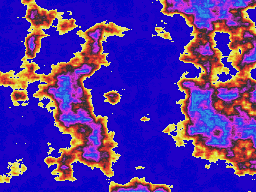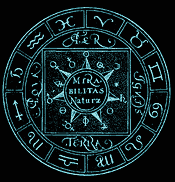It's night here in Holland and I am still at the computer at almost 3 in the morning. Was in Amsterdam today, attending a mini astrology congress for the Dutch astrologer Karen Hamaker-Zondag who had her 25 year jubilee as an astrologer and writer of astrology books.

Sounds a bit dry eh, and it was... a bit dry. There were three lectures, with tea, coffee and cookies in between, and a very fast cigarette. First two Australian astrologers who had moved to England, but still had that typical Australian accent which makes you think they were raised in the gutter, sorry to say. And the last lecturer was a German whose language made me revolt inside, I don't really know why. Luckily the light fell out of the projection thing, which wasn't my fault, so there was a 5 minute break in which I never returned.
Of course it was interesting as well. I didn't pay 69 euro for nothing. The Australian women were fast, concise and very eloquent, despite the horrible pronunciation. (I know it sounds very snobbish, but I can't help it. It makes my ears go strange.)
The first lecture was about the place astrology could now take among the latest Chaos Philosophy, with Strange Attractors and Hopf Bifurcations. Interesting words, don't you think? I will leave them unexplained, so you can make up your own meaning. If you want to know what they really mean, just turn to Google. There are lots of sites about Chaos Philosophy on the net, I know, because I just checked a couple of them.
 In the words of physicist Paul Davies in his book The Cosmic Blueprint (1988):
In the words of physicist Paul Davies in his book The Cosmic Blueprint (1988):
There is no detailed blueprint, only a set of laws with an inbuilt facility for making interesting things happen. The universe is free to create itself as it goes along. The general pattern of development is "predestined", but the details are not. Thus, the existence of intelligent life at some stage is inevitable; it is, so to speak, written into the laws of nature. But man as such is far from preordained.
The second lecture was of more interest to me. She talked about Holding On and Letting Go and how our birth chart can tell us more about these important phenomena in our lives. The Moon is a very important planet in the Holding On sector. Not only the sign where the Moon is in, also its house placement, which planet rules the house where the Moon is in, and hard (stressful) aspects to other planets or the Sun.
She said something very useful about Disappointment and Failure. Ask questions such as - Why? Due to? For what reason? Because?- whenever you are confronted with a feeling of disappointment or failure. This rational questioning takes the heat out of the emotional frustration and gives you the opportunity to see things from a wider angle. She also gave a list of Small Things To Change, also in the form of questions.
She also gave a list of Small Things To Change, also in the form of questions.
(The Moon)
1. How did I feel in that situation?
2. What do I feel was the cause of that feeling?
3. What would I have preferred to have felt?
(Mars)
1. What action did I want to take?
2. What is a better action to take?
(Mercury)
1. Is there anything I regretted saying in that situation?
2. Could I have said it better?
3. What do I still want to say to that person?
And she gaves us even more questions about Handling Change:
-What is your perception of the event that is happening? (your Mercury)
-How do you feel about it? (your Moon)
-What fears come up, what control do you want? (your Saturn)
-What small action can you take that would start to let go? (your Mars)
-Can you see yourself in a new and positive way? (your Jupiter)
-If so, how does it feel? (your Moon)
-What messages are you telling yourself about what's happening? (your Mercury)
Lots of other things of course, but I will be brief and finish with the German speaker. He talked about the transformation process using terms and images from alchemy and tarot. The first image he used was The Hanged Man, which he thought of as THE symbol for us human beings, because we are the only creatures that know we are going to die. We can act against our nature and are responsible for it too. Depression also belongs to The Hanged Man.
According to the German writer Karl von Durckheim we have three main fears: 1. Fear of loneliness. 2. Fear of destruction/death. 3. Fear of the absurdity of life and not being able to rise above it.
In the Tarot transformation goes from The Hanged Man to The World and when you lay the cards together, The World above and The Hanged Man under it, you get the symbol of the Ankh.

Then I closed my eyes for a while and dozed off at the sound of German words that felt like a smooth but sticky river (Hermes Trismegistos, der Stein der Weisen, der Caduceus, das Yin Yang Symbol, die Chakra's) and woke up to hear that the projector had fallen out. Relieved I went to take a break and never returned.
The congres had been like a short day at a school I never liked going to, it was too much work and hardly no play. Why are lectures almost always so dry and hardly without any humor?













